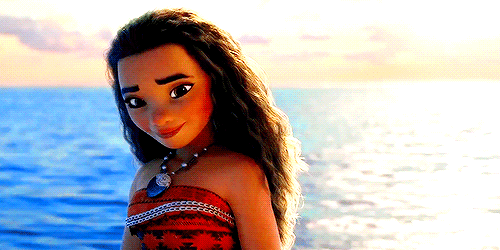A Chronology of Gender Roles in Disney Movies
As we move on from our discussion of gender roles in Disney movies and start conversations on race in animated film, I wanted to take some time to further analyze feminism in Disney movies—including but not limited to the movies we saw in class. Disney has had some negative experiences with feminism in films in the past, but present films show that the company is doing its best to reverse this image. Below, I'm charting a chronology of some of Disney's gender-role messages, from its first to its most recent films.
1. Snow White and the Seven Dwarfs, 1937
Walt Disney's first film did little to empower women, featuring a princess who is forced to run away because of her beauty, and who cooks and cleans for seven men only to be swept away by her prince. Disney definitely could have done better. Empowering rating 1/10.
2. Cinderella, 1950
Self-explanatory: the story follows a typical plot of a young maiden being saved by Prince Charming. 2/10.
3. Peter Pan, 1953
Disney emphasizes the patriarchy on a whole new level with this movie. Poor Wendy, being forced to "grow up" and become motherly. 1/10.
4. The Jungle Book, 1967
The movie doesn't have many female characters, but the ending scene with Shanti says it all: she sings about cooking and caring for her children and sending her future daughter out to fetch the water. 2/10.
5. The Little Mermaid, 1989
This one makes me mad: a sixteen-year-old gives away her life, voice, and family for a man she just met, essentially sexualizing herself because she has no voice just so she can marry. (Don't forget Ariel's trademark plea: "Daddy, I love him!"). 1/10.
6. Beauty and the Beast, 1991
At the turn of the decade we're getting a little better: at least now the main character has a brain, reads books, and doesn't fall in love with the first man she meets. Still, her happy-ever-after is defined by a man (the Beast). Progress, but not quite there yet. 4/10.
7. The Lion King, 1994
Disney has backtracked. All of the women in this film have subservient roles and are apparently unable to fight against Scar; they must instead be saved by Simba. Nala's only purpose is to fall in love with Simba and urge him to be the hero. 2/10.
8. Pocahontas, 1995
I can tell Disney is making an effort here: they have made Pocahontas a powerful woman who ends up saving her tribe. However, there's still the trope of the princess falling in love with the man—and Pocahontas herself is depicted as unrealistically beautiful and objectified. 5/10.
9. The Hunchback of Notre Dame, 1996
Some more progress on Disney's part: Esmeralda is a strong character who defeats Frollo and saves Quasimodo in the process. Judge Frollo, who sexualizes Esmeralda, is viewed as the villain, and his creepy qualities are highlighted to make him seem even more demented. There is still a happy-ever-after with Captain Phoebus and Esmeralda, but what's a Disney movie without a little romance? 7/10.
10. The Princess and the Frog, 2009
Finally: a Disney princess who works hard, has something other than romance in mind, and who is rewarded for it. Tiana proves that a happy-ever-after can be achieved in multiple ways: she ends up with her prince while also having a successful career. 8/10.
11. Frozen, 2013
This movie shows true love is not always associated with romance: Elsa and Anna save each other with their sisterly love, and it's the first Disney princess movie that doesn't end with a wedding. Anna and Kristoff are happily dating because the movie disproved the theory of love/marriage at first sight. Also, Elsa is inspiringly independent. 9/10.
12. Moana, 2016
Perhaps the most feminist of Disney movies, Moana shows a girl with no love interest who fulfills her own destiny, complete with an adorable pig and rooster sidekick. Creators of the movie also addressed the previously unspoken notion that Disney princesses had to have unrealistic body proportions. 9.5/10 (there's always room for improvement)!
Just by looking at the ratings of Disney movies through the ages, one can see the strides Disney has made towards creating more empowered female characters. I believe the company understands its influence on young girls (and boys!), and it is adjusting its portrayal of stereotypical gender roles to reflect that. I can't wait to see the progress it continues to make.










Comments
Post a Comment